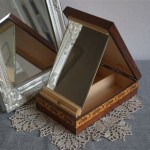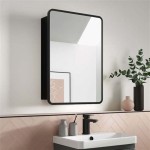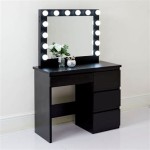How To Mirror iPhone to Samsung TV with HDMI Cable
Mirroring an iPhone to a Samsung TV using an HDMI cable presents a straightforward and generally reliable method for displaying content from the mobile device on a larger screen. This approach is beneficial in various scenarios, from sharing photos and videos with a group to delivering presentations or enjoying mobile games on a more immersive scale. This article provides a detailed explanation of the necessary equipment, connection process, troubleshooting steps, and alternative mirroring methods.
Understanding the Necessary Equipment
To successfully mirror an iPhone to a Samsung TV via HDMI, specific hardware components are required. These components ensure compatibility and proper signal transmission between the iPhone and the television. The primary components include:
1. Apple Lightning Digital AV Adapter: This adapter serves as the crucial link between the iPhone's Lightning port and the HDMI cable. It converts the digital signal from the iPhone into a format compatible with HDMI input. It is essential to use a genuine Apple adapter or a certified third-party adapter to avoid potential compatibility issues or signal degradation. Counterfeit or low-quality adapters may not function correctly or may cause damage to the connected devices. The official Apple adapter also includes a Lightning port, allowing you to charge your iPhone while mirroring to the TV, preventing battery drain during prolonged use.
2. HDMI Cable: The HDMI cable is responsible for transmitting both audio and video signals from the Lightning Digital AV Adapter to the Samsung TV. The cable should be of sufficient length to comfortably connect the iPhone to the TV without excessive strain on the ports. A high-quality HDMI cable can provide better signal integrity and support higher resolutions, ensuring a clearer and more visually appealing display on the television. Newer HDMI standards (e.g., HDMI 2.0 or 2.1) may be needed to support 4K or HDR content if the iPhone and Samsung TV are capable of these resolutions and features.
3. iPhone: The iPhone acting as the content source. Ensure the iPhone is running a compatible version of iOS. Older iOS versions might present compatibility issues with the Lightning Digital AV Adapter. It's always recommended to update to the latest iOS version compatible with the device for optimal performance and security.
4. Samsung TV: The Samsung TV, equipped with an HDMI port, serves as the display device. Identify an available HDMI port on the TV. Note which port number it is (e.g., HDMI 1, HDMI 2). Access the TV's input selection menu after connecting the cable to choose the correct HDMI source.
The Connection Process: A Step-by-Step Guide
Connecting the iPhone to the Samsung TV via HDMI is a relatively simple process if followed correctly. Here's a detailed, step-by-step guide:
1. Connect the Lightning Digital AV Adapter to the iPhone: Plug the Lightning Digital AV Adapter into the Lightning port on the bottom of the iPhone. Ensure the connection is secure and firm. A loose connection can result in intermittent signal loss or a complete failure to display the content.
2. Connect the HDMI Cable to the Adapter: Insert one end of the HDMI cable into the HDMI port on the Lightning Digital AV Adapter. Again, make sure the connection is secure.
3. Connect the Other End of the HDMI Cable to the Samsung TV: Plug the other end of the HDMI cable into an available HDMI port on the back of the Samsung TV. Remember the HDMI port number (e.g., HDMI 1, HDMI 2) for later selection in the TV's input menu.
4. Power On the Samsung TV: Turn on the Samsung TV using the remote control or the power button on the TV itself.
5. Select the Correct HDMI Input Source: Using the Samsung TV remote control, navigate to the input selection menu. This menu is typically labeled "Source," "Input," or something similar. Select the HDMI port number to which the HDMI cable is connected. For example, if the cable is connected to HDMI 1, select HDMI 1. After selecting the correct input, the iPhone's screen should be mirrored on the Samsung TV.
6. Adjust Display Settings (If Necessary): In some cases, the display may not perfectly fit the screen or may have incorrect aspect ratio. Adjust the display settings on the Samsung TV to optimize the viewing experience. These settings can usually be found in the TV's picture settings menu. Options like "Screen Fit," "Aspect Ratio," or "Zoom" can be adjusted to fill the screen properly and avoid distortion.
Troubleshooting Common Issues
Despite the simplicity of the connection process, users may encounter issues during mirroring. Here are some common problems and their corresponding solutions:
1. No Signal or Black Screen: If the Samsung TV displays a "No Signal" message or a black screen after connecting the iPhone, the following troubleshooting steps can be taken:
*
Verify the HDMI Connections:
Ensure that all HDMI connections are secure, both at the adapter and the TV. Disconnect and reconnect the cables to ensure a firm connection.*
Check the HDMI Input Source:
Confirm that the correct HDMI input source is selected on the Samsung TV. Cycle through the available HDMI inputs to ensure the right one is chosen.*
Test the HDMI Cable:
Try using a different HDMI cable to rule out the possibility of a faulty cable. A damaged or low-quality cable can cause signal loss.*
Test the Lightning Digital AV Adapter:
If possible, test the adapter with another iPhone or another HDMI device to ensure that the adapter is functioning correctly. If the adapter is faulty, it will need to be replaced.*
Restart the iPhone and Samsung TV:
A simple restart can often resolve temporary glitches. Turn off both the iPhone and the Samsung TV, wait a few seconds, and then turn them back on.2. Poor Video Quality: If the video quality is blurry, pixelated, or otherwise unsatisfactory, consider the following:
*
Use a High-Quality HDMI Cable:
A low-quality HDMI cable can degrade the video signal. Use a high-quality cable that is capable of supporting the desired resolution (e.g., 1080p or 4K).*
Check the Resolution Settings:
Ensure that the iPhone is outputting the correct resolution. Check the display settings on the iPhone (Settings > Display & Brightness) and adjust the resolution if necessary.*
Adjust the TV's Picture Settings:
The Samsung TV's picture settings can significantly impact the video quality. Experiment with different picture modes (e.g., Standard, Movie, Dynamic) and adjust settings like brightness, contrast, and sharpness to optimize the viewing experience.3. Audio Issues: If there is no audio or the audio is distorted, try the following:
*
Check the Volume Levels:
Ensure that the volume is turned up on both the iPhone and the Samsung TV. Also, check that the iPhone is not muted.*
Verify the Audio Output Settings:
On the iPhone, go to Settings > Bluetooth and make sure that the audio is not being routed to a Bluetooth device. The audio should be outputting through the HDMI connection.*
Check the TV's Audio Settings:
On the Samsung TV, check the audio output settings to ensure that the audio is being routed to the correct speakers. Experiment with different audio modes (e.g., Stereo, Surround) to see if that resolves the issue.4. Compatibility Issues: In rare cases, older iPhones or Samsung TVs may have compatibility issues with the Lightning Digital AV Adapter. Ensure that both devices are running the latest software or firmware updates. Contact Apple or Samsung support for further assistance if compatibility problems persist.
Alternative Mirroring Methods
While using an HDMI cable offers a direct and reliable connection, several alternative wireless mirroring methods are available for iPhone and Samsung TV users. These methods leverage Wi-Fi connectivity and offer greater flexibility in terms of device placement.
1. AirPlay 2: AirPlay 2 is Apple's proprietary wireless mirroring technology that allows users to stream audio and video content from their iPhone to compatible devices, including select Samsung TVs. To use AirPlay 2, the Samsung TV must support AirPlay 2, and both the iPhone and the TV must be connected to the same Wi-Fi network. To initiate AirPlay mirroring, open the Control Center on the iPhone, tap "Screen Mirroring," and select the Samsung TV from the list of available devices. If prompted, enter the AirPlay passcode displayed on the TV screen.
2. Smart View (Samsung App): Samsung's Smart View app (now discontinued and features integrated into SmartThings) allowed screen mirroring from mobile devices to Samsung TVs. Newer Samsung TVs rely on AirPlay 2 for iOS mirroring. However, If you have an older TV that supported Smart View, you can download the app and connect both devices to the same Wi-Fi network. Open the Smart View app on the iPhone and select the Samsung TV from the list of available devices. The iPhone's screen will then be mirrored on the TV.
3. Third-Party Apps: Several third-party apps available on the App Store offer screen mirroring capabilities for iPhone and Samsung TV. These apps typically connect to the TV via Wi-Fi and allow users to stream content, mirroring the screen. Some popular options include AirBeamTV, MirrorMeister, and Replica. Be cautious when using third-party apps, ensuring they are reputable and secure before granting them access to the iPhone's screen.
4. Chromecast with Google TV: While not a direct mirroring solution, Chromecast with Google TV can facilitate content sharing between an iPhone and a Samsung TV. Users can cast content from apps like YouTube, Netflix, and Hulu from their iPhone to the Chromecast, which is connected to the Samsung TV's HDMI port. To cast content, ensure that both the iPhone and the Chromecast are connected to the same Wi-Fi network. Open the app on the iPhone and tap the cast icon to select the Chromecast device.

3 Ways To Mirror Iphone Tv Without Apple Istreamer
How To Screen Mirror From An Iphone A Samsung Tv

How To View Your Iphone On A Tv Hdmi Cable

Simple Ways To Mirror Iphone Tv Without Wifi 6 Steps

4 Easy Ways To Mirror Iphone Samsung Tv For Free

How To Connect Your Iphone Xr Tv Mobile Fun Blog

Screen Mirroring A Phone Ipad Or Laptop To Tv How Push Your The Big

How To Connect Any Phone Your Tv Via Usb

Screen Mirroring A Phone Ipad Or Laptop To Tv How Push Your The Big
Can I Mirror My Phone To A Non Smart Tv Using Usb Quora








